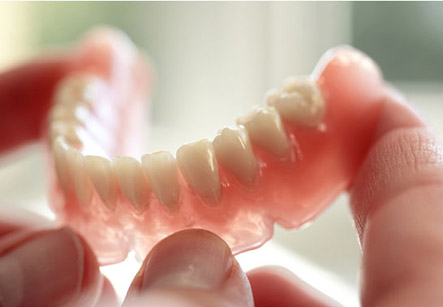Flexible Partial Dentures
Introduction
It was a thought that removable partial dentures have to be rigid to be effective. Traditionally, removable partial dentures are constructed from a rigid metal base to replace missing teeth. They are indicated in the patients missing only some of their natural teeth. Full rigid dentures and partial dentures have been used in dentistry for many decades. They can pose many problems for patients, such as poor aesthetics of metal used to cover the natural teeth.
Flexible partial dentures provide excellent aesthetics and comfort for patients who prefer to wear a removable restoration rather than a fixed solution such as a dental bridge or dental implants. The flexible base in this type of restoration can adapt to the constant movement and flexibility in the mouth.
Flexible partial dentures involve very limited preparation as the natural teeth need not be altered in any way. These are made as custom-fabricated products in a dental laboratory. The dentist orders to make them on the basis of measurements of oral cavity and impression created from it. Flexible partials can be virtually invisible because there are no metal clasps used to cover the natural teeth. Furthermore, most flexible materials blend with the tissues in the mouth properly.
The dentures prevent the contiguous teeth from shifting in a place created by missing teeth.

Most of the patients become immediately accustomed to this delicate and light-weight restoration. Sometimes, a brief adjustment period is required to the patient if he or she has never worn a dental appliance before. But if the irritation persists, the dentist should be visited to make necessary adjustments to the appliance.
Flexible Partial Dentures Materials
The material mostly used for flexible partial denture is nylon. The unsightly and uncomfortable materials such as metal and the acrylic denture material used for traditional dental restorations are being replaced by nylon. The advantages of nylon are many such as it is nearly unbreakable, closely mimics the gums in color, can be made very thin, and can be used to construct the denture base as well as the clasps for anchoring. The clasps which are built to curl around the necks of the teeth are practically indistinguishable from the gums surrounding the natural teeth.
Another type of flexible partial denture material used is a vinyl composite. These materials are also flexible and can be made with tooth or gum colored clasps. Vinyl composite dentures are considered as more easy to adjust and are thus considered more convenient for the patient.
Purpose of a Partial Denture:
1. It replaces the missing teeth and is fully functional when biting and chewing.
2. It also helps to improve speaking affected by missing teeth.
3. Due to missing teeth, sagging of cheeks and face can occur as their support is lost. Age lines and wrinkles also appear earlier because of loss of facial structures. This can make the patient look older than actual age. All this can be prevented by partial dentures.
4. The dentures prevent the contiguous teeth from shifting in a place created by missing teeth. Change of bite, sore jaws and problems in the temporomandibular joint as a result of this shifting can be prevented.
5. Missing teeth also compromise dental and oral hygiene causing tooth decay and various gum diseases. This is prevented by dentures.
Care of Flexible Partial Denture
Like the natural teeth, flexible partial dentures also require care and good oral hygiene. The following instructions can help to keep the restoration looking and feeling like a new one:
1. Daily brushing of natural teeth and washing with a mouth rinse should be done to prevent food and plaque build-up. Special soft picks are also available to clean the teeth.
2. Ice, hard candy and sticky foods such as chewing gum should be eaten with caution or avoided completely.
3. Clean the flexible appliance regularly with a specific cleaner provided with the denture. The flexible denture needs to be soaked regularly in this cleaner.
4. Loose particles trapped in the appliance can be removed by washing it under running water or by using a sonic denture cleaner.
5. Brushing a denture is generally not recommended as this may remove the polish and roughen the surface of it over time.
6. Rinse the appliance after eating to remove any food particles.
7. Denture should be kept in water or in denture cleaner whenever it is not being used to keep the surface moist.